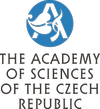Mechanism of auxin transport
Using in vitro cultured plant cells (cell suspensions) adapted for direct measurements of auxin flow through cells (Petrášek a Zažímalová, in Biotechnology in Agriculture and Forestry 2006) we have revealed the involvement of cellular auxin efflux in the establishment of polarity of cell division (Petrášek et al., Planta 2002). We have described the response of cytoskeletal structures and endomembranes to the inhibition of polar auxin transport and quantitatively characterized the action of some polar auxin transport inhibitors (NPA and BFA, Petrášek et al., Plant Physiol. 2003). We have also contributed to the characterization of effects of some other inhibitors – TIBA or PBA (Dhonukshe et al., PNAS 2008).
 We have participated on the discovery of inhibitory action of
auxin on constitutive cycling of proteins, including auxin efflux carriers from
PIN protein family (Paciorek et
al., Nature 2005). Then we have transformed tobacco cell culture with
Arabidopsis PIN genes and determined an array of kinetic parameters of
auxin flow in these cell lines. Results obtained led to the conclusion that PIN
proteins catalyze directly and with high specificity the transport of auxins
from cells to intercellular space and they play a rate-limiting role in auxin
flow (Petrášek et al.,
Science 2006). Working on the non-canonical member of the PIN family –
PIN5 – we have characterized changes in the metabolic profile of native auxin
after overexpression of this protein and provided important evidence for the so
far unknown function of intracellular auxin carriers (Mravec et al., Nature 2009).
When investigating the Auxin-Binding Protein 1 (ABP1), the candidate auxin
receptor involved in ‘non-genomic’ auxin responses, we participated on
revealing its function in regulation of endocytosis of proteins from plasma
membrane, including PIN auxin transporters (Robert et al., Cell
2010).
We have participated on the discovery of inhibitory action of
auxin on constitutive cycling of proteins, including auxin efflux carriers from
PIN protein family (Paciorek et
al., Nature 2005). Then we have transformed tobacco cell culture with
Arabidopsis PIN genes and determined an array of kinetic parameters of
auxin flow in these cell lines. Results obtained led to the conclusion that PIN
proteins catalyze directly and with high specificity the transport of auxins
from cells to intercellular space and they play a rate-limiting role in auxin
flow (Petrášek et al.,
Science 2006). Working on the non-canonical member of the PIN family –
PIN5 – we have characterized changes in the metabolic profile of native auxin
after overexpression of this protein and provided important evidence for the so
far unknown function of intracellular auxin carriers (Mravec et al., Nature 2009).
When investigating the Auxin-Binding Protein 1 (ABP1), the candidate auxin
receptor involved in ‘non-genomic’ auxin responses, we participated on
revealing its function in regulation of endocytosis of proteins from plasma
membrane, including PIN auxin transporters (Robert et al., Cell
2010).
We have taken part on characterization of molecular interaction between auxin transporters of PIN- and MDR/PGP/ABCB-type (Mravec et al., Development 2008), on elucidation of the function of proteins from AUX1/LAX and PIN families during Arabidopsis thaliana apical hook development (Vandenbussche et al., Development 2010; Žádníková et al., Development 2010), and on revealing the involvement of nitrate transporter NRT1.1 in uptake of auxin into cells of A. thaliana roots (Krouk et al., Developmental Cell 2010).
In collaboration with the Laboratory of Molecular Plant Physiology of Faculty of Science of Masaryk University, Brno (Dr. Jan Hejátko and co-workers) and with Dr. Benková’s group in VIB, Ghent we are involved in analysis of interactions between cytokinins and auxins in organogenesis de novo, in particular on the level of regulation of transporters taking part in formation of auxin maxima via polar auxin transport (Pernisová et al., PNAS 2009; Růžička et al., PNAS 2009, respectively).
We have isolated and characterized the gene PaLAX1 from Prunus avium (Hoyerová et al., Plant Physiol. 2008) and we study properties of the corresponding protein. We have contributed to the knowledge on so-called auxin influx inhibitors and pointed at distinct mechanism of their action (Laňková et al., Journal of Experimental Botany 2010).
We also pointed at several, so far unknown side effects of FM-dyes which are widely used for investigation of membrane dynamics (Jelínková and Malínská et al., Plant Journal 2010).
We have published reviews on auxin transporters, their function and its regulation and about their role in plant development (Zažímalová et al., Cell. Mol. Life Sci. 2007; Křeček and Skůpa et al., Genome Biology 2009; Petrášek and Friml, Development 2009; Zažímalová and Murphy et al., Cold Spring Harbor Perspectives in Biology 2010; Petrášek et al., in Geisler M. a Venema K. (eds): Transporters and Pumps in Plant Signaling, Springer Verlag, 2011), about types of auxins themselves (Simon and Petrášek, Plant Science 2011) and about structure of eukaryotic plasma membrane (Malínská and Zažímalová, Current Protein and Peptide Science in press 2011).
The aim of our work is understanding quantitative aspects of auxin transport across membranes and characterization of regulation of PIN activity on transcriptional level and from the point of view of their subcellular localization. We also continue in characterization of properties of transporters from AUX1/LAX, PIN a MDR/PGP/ABCB families and function of protein ABP1.
We collaborate particularly with VIB Department of Plant Systems Biology, Ghent University, Belgium (Prof. Jiří Friml, Dr. Eva Benková and co-workers), with Ghent University, Department of Physiology, Ghent, Belgium (Prof. Dominique Van Der Straeten and co-workers), with Institute of Plant Sciences, University of Bern, Switzerland (Prof. Cris Kuhlemeier and Dr. R. Smith), with Purdue Univ., West Lafayette, IN, USA (Prof. Angus Murphy, Prof. Wendy Peer and co-workers), with Botanical Institute, University Karlsruhe, Germany (Prof. Peter Nick), with University of Sydney, Australia (Assoc. Prof. Jan Marc), with University of Leiden, The Netherlands (Dr. Remko Offringa), with University of Natural Resources and Life Sciences, Vienna, Austria (Dr. Christian Luschnig other colleagues in the Czech Republic and abroad.

